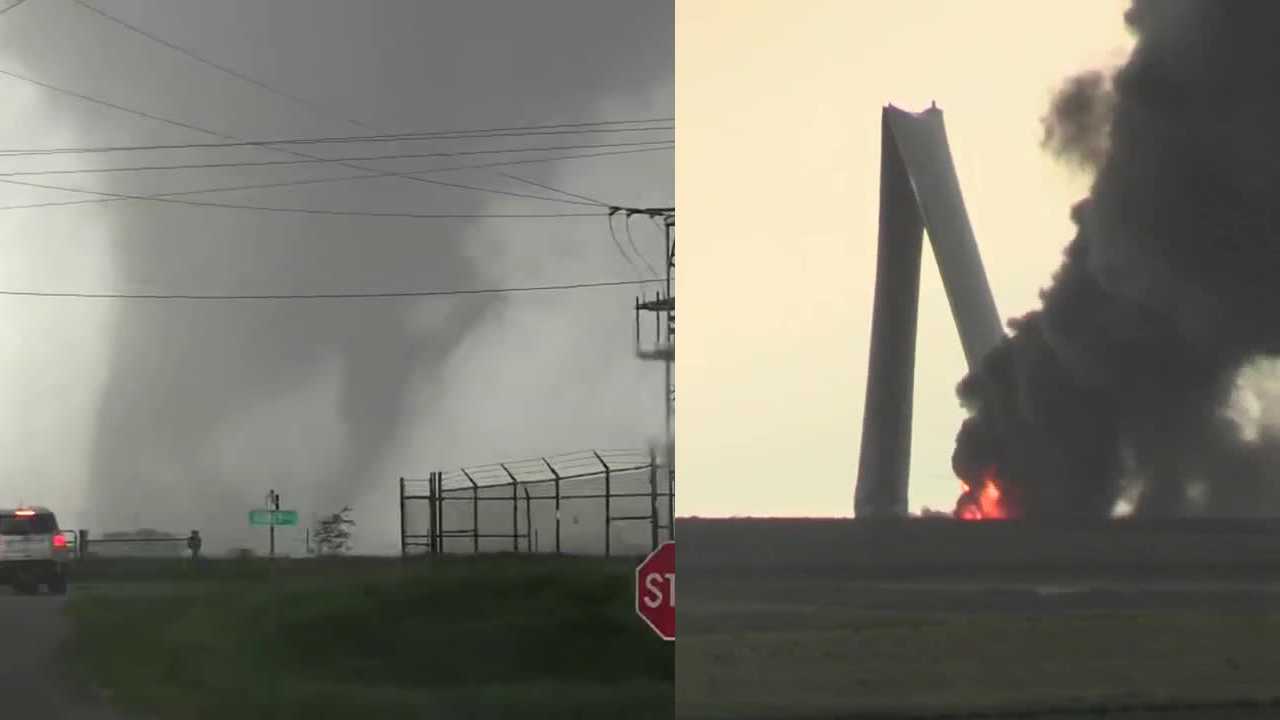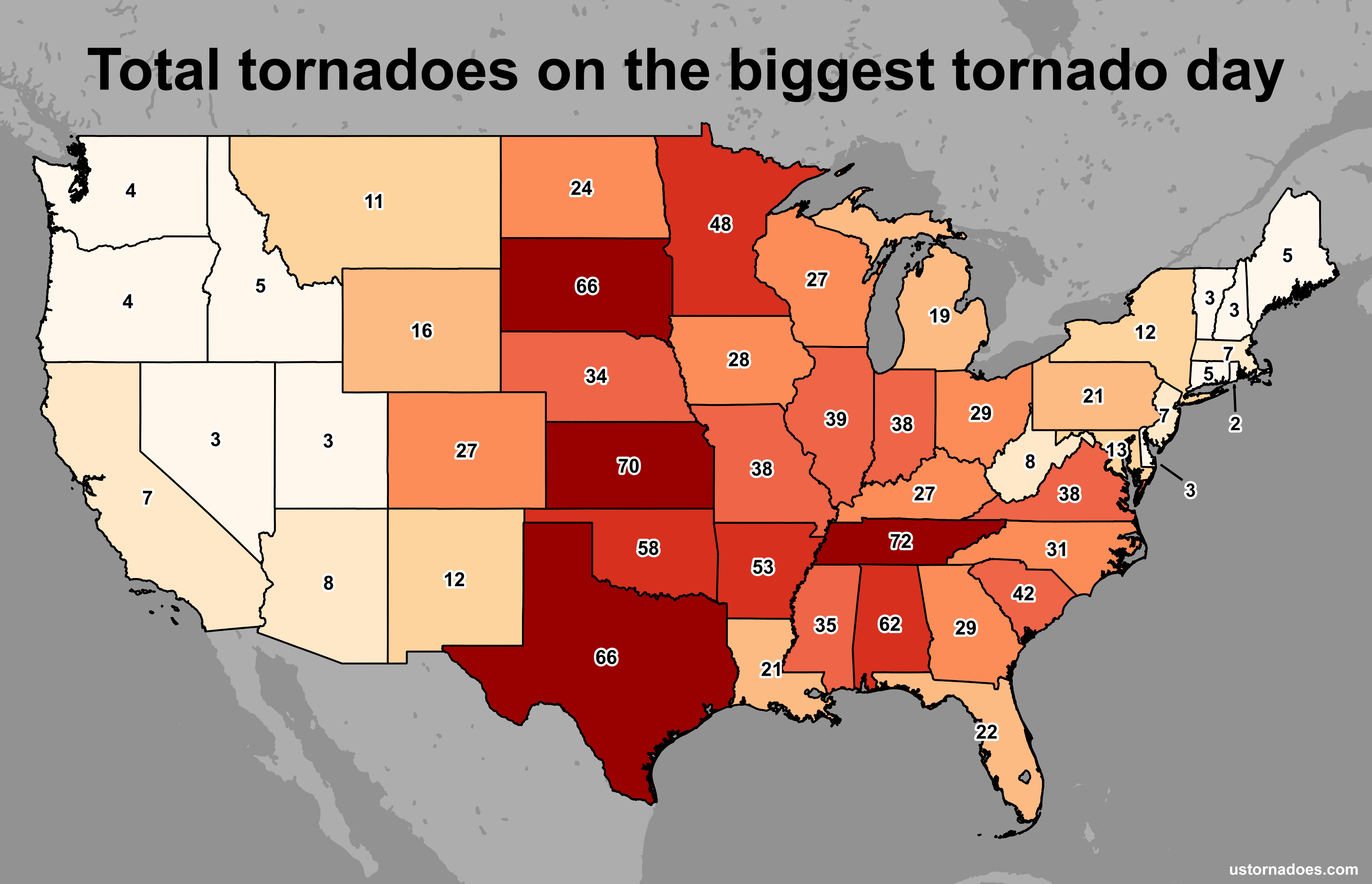Iowa Tornado History: Tornado In Iowa Today
Tornado in iowa today – Iowa has a long and well-documented history of tornadoes, with some of the most destructive and deadly tornadoes in the nation occurring within its borders.
The state’s first recorded tornado occurred in 1844, and since then, Iowa has experienced an average of 53 tornadoes per year. The most active tornado year in Iowa was 1974, when 122 tornadoes were reported. The deadliest tornado in Iowa history occurred in 1968, when an F5 tornado killed 65 people in Parkersburg.
Frequency and Patterns of Tornado Occurrences in Iowa
Tornadoes can occur anywhere in Iowa, but they are most common in the central and western parts of the state. The peak tornado season in Iowa is from April to June, with May being the most active month.
As the tornadoes tear through Iowa today, the greenfield ia tornado stands out as a particularly destructive force. The twister has left a trail of devastation in its wake, with homes and businesses reduced to rubble. As the storm continues to rage, residents are urged to take shelter and stay informed about the latest updates.
Iowa’s tornadoes are often part of larger tornado outbreaks that affect multiple states. The most notable of these outbreaks occurred in 1974, when a series of tornadoes killed more than 300 people across the Midwest. The 2011 Joplin tornado was another deadly outbreak that affected Iowa, killing six people in the state.
Tornado Safety and Preparedness
In the face of the impending threat of tornadoes, it is imperative to be equipped with the knowledge and resources necessary to ensure safety and minimize potential damage. This comprehensive guide will provide an overview of tornado safety measures, including the various types of warnings and watches, the creation of a comprehensive tornado safety plan, and crucial tips for staying safe during these powerful storms.
Tornado Warnings and Watches
The National Weather Service (NWS) issues two primary types of tornado-related alerts: watches and warnings. A tornado watch indicates that conditions are favorable for the development of tornadoes within a specific area. In contrast, a tornado warning signifies that a tornado has been spotted or detected by radar and poses an imminent threat to life and property.
The devastating tornadoes that swept through Iowa today have left a trail of destruction in their wake. One particularly severe tornado touched down near Greenfield, causing widespread damage and leaving many residents without power. For more information on the greenfield tornado today , please visit our website.
Creating a Tornado Safety Plan
Every household should have a designated tornado safety plan in place. This plan should Artikel the following key elements:
- A safe room or shelter, such as a basement or interior room on the lowest level of your home.
- A designated meeting place outside your home in case you are separated during the storm.
- An emergency communication plan, including contact information for family members and emergency services.
- A list of essential supplies, such as food, water, first aid kits, and medications.
Tips for Staying Safe During a Tornado, Tornado in iowa today
If you are caught in a tornado, it is crucial to take immediate action to protect yourself. Follow these tips to enhance your chances of survival:
- Seek shelter immediately in your designated safe room or shelter.
- Stay away from windows and exterior walls.
- Lie down flat and cover your head with your hands or a blanket.
- If you are outdoors, lie down in a ditch or low-lying area and cover your head.
- Do not attempt to outrun a tornado.
Tornado Damage Assessment

When a tornado strikes, it can leave behind a trail of devastation. The damage caused by tornadoes can vary widely depending on the strength of the tornado, the type of structures it hits, and the terrain it crosses.
Amidst the tumultuous skies of Iowa today, the ominous threat of tornadoes looms large. The National Weather Service has issued a tornado warning , urging residents to seek shelter immediately. As the swirling vortex descends upon the land, winds howl and debris flies through the air, leaving a trail of destruction in its wake.
The process of assessing tornado damage is complex and time-consuming. It involves a team of experts who must carefully examine the damage to determine the severity of the tornado and the best course of action for recovery.
Reporting and Receiving Assistance
If you have been affected by a tornado, it is important to report the damage to your local authorities. You can also contact the Federal Emergency Management Agency (FEMA) for assistance. FEMA can provide financial assistance, housing assistance, and other resources to help you recover from the tornado.
The tornadoes that touched down in Iowa today have left a trail of destruction in their wake. One of the hardest-hit areas was Greenfield, where homes and businesses were damaged or destroyed. The extent of the damage in Greenfield is still being assessed, but it is clear that the community will need significant help to rebuild.
The tornadoes also caused damage in other parts of Iowa, including Des Moines and Cedar Rapids. The National Weather Service is continuing to track the storms and is urging residents to stay safe.
Tornado Forecasting and Tracking
Tornadoes are notoriously difficult to predict, but significant advancements in technology have improved our ability to forecast and track these dangerous storms.
The tornadoes that ripped through Iowa today have left a trail of destruction in their wake. In Greenfield, weather conditions were particularly severe, with winds reaching speeds of up to 100 miles per hour. The storm tore through the town, damaging homes and businesses and leaving thousands without power.
Meteorologists use a variety of tools to forecast tornadoes, including:
- Weather radar: Radar can detect the rotation of air within a storm, which is an indication of a possible tornado.
- Satellite imagery: Satellite images can show the development of thunderstorms that may produce tornadoes.
- Computer models: Computer models can simulate the atmosphere and predict the likelihood of tornado formation.
Once a tornado has formed, meteorologists use a variety of methods to track its movement, including:
- Spotter networks: Trained spotters report tornado sightings to the National Weather Service.
- Doppler radar: Doppler radar can measure the speed and direction of the wind within a tornado.
- Mobile weather stations: Mobile weather stations can be deployed to collect data on tornadoes.
Technology in Tornado Detection
Technology has played a major role in improving our ability to detect tornadoes. Doppler radar, in particular, has been a game-changer. Doppler radar can detect the rotation of air within a storm, which is an indication of a possible tornado. This information can be used to issue tornado warnings more quickly and accurately.
Other technologies that are used to detect tornadoes include:
- Lightning detection networks: Lightning is often associated with tornadoes, so lightning detection networks can be used to identify areas where tornadoes may be forming.
- Thermal imaging: Thermal imaging can be used to detect the heat signature of a tornado.
- Unmanned aerial vehicles (UAVs): UAVs can be used to collect data on tornadoes from close range.
Resources for Staying Informed
There are a number of resources available to help you stay informed about tornado threats, including:
- The National Weather Service: The National Weather Service issues tornado warnings and watches. You can sign up for weather alerts from the NWS at weather.gov.
- Local media: Local media outlets often provide coverage of tornado threats and warnings. You can listen to local radio or TV stations, or check their websites for updates.
- Mobile weather apps: There are a number of mobile weather apps that can provide you with tornado alerts and warnings. Some popular apps include the Weather Channel app, the AccuWeather app, and the Dark Sky app.
Tornado Climatology
Iowa, situated in the heart of Tornado Alley, experiences a significant number of tornadoes annually. Understanding the climatology of tornadoes in the state is crucial for effective preparedness and mitigation efforts.
On average, Iowa witnesses around 50 tornadoes each year, ranging from weak to violent. These tornadoes can occur throughout the state, but certain areas are more prone to their occurrence.
Factors Influencing Tornado Formation
The formation of tornadoes in Iowa is influenced by several factors, including:
- Atmospheric Instability: Warm, moist air from the Gulf of Mexico collides with cooler, drier air from the north, creating unstable atmospheric conditions conducive to tornado formation.
- Wind Shear: Changes in wind speed and direction with height allow for the development of rotating updrafts, which can evolve into tornadoes.
- Upper-Level Jet Stream: A strong jet stream can provide the necessary wind shear for tornado formation.
Areas Vulnerable to Tornadoes
While tornadoes can occur anywhere in Iowa, certain areas are more vulnerable due to geographical and meteorological factors:
- Western and Central Iowa: These regions lie within the primary tornado track, experiencing a higher frequency of tornadoes compared to other parts of the state.
- Mississippi River Valley: The convergence of warm, moist air from the south and cooler air from the north creates a favorable environment for tornado formation along the Mississippi River Valley.
li>Des Moines Metro Area: The metropolitan area of Des Moines is particularly vulnerable due to its location in the central part of the state and the convergence of multiple weather systems.
Tornado Research

Understanding tornadoes and developing effective strategies to mitigate their impacts require ongoing research efforts. Scientists, engineers, and meteorologists are actively engaged in various research projects to improve our knowledge of tornado behavior, forecasting, and safety measures.
Research plays a crucial role in enhancing our ability to predict, prepare for, and respond to tornadoes. By studying past events, analyzing atmospheric conditions, and developing new technologies, researchers aim to improve early warning systems, identify areas at risk, and design resilient structures.
Citizen Scientists in Tornado Research
Citizen scientists play a significant role in tornado research. They contribute to data collection, storm tracking, and damage assessment efforts. By reporting sightings, taking photographs, and sharing observations, citizen scientists provide valuable information that complements official data and helps researchers gain a more comprehensive understanding of tornado behavior.